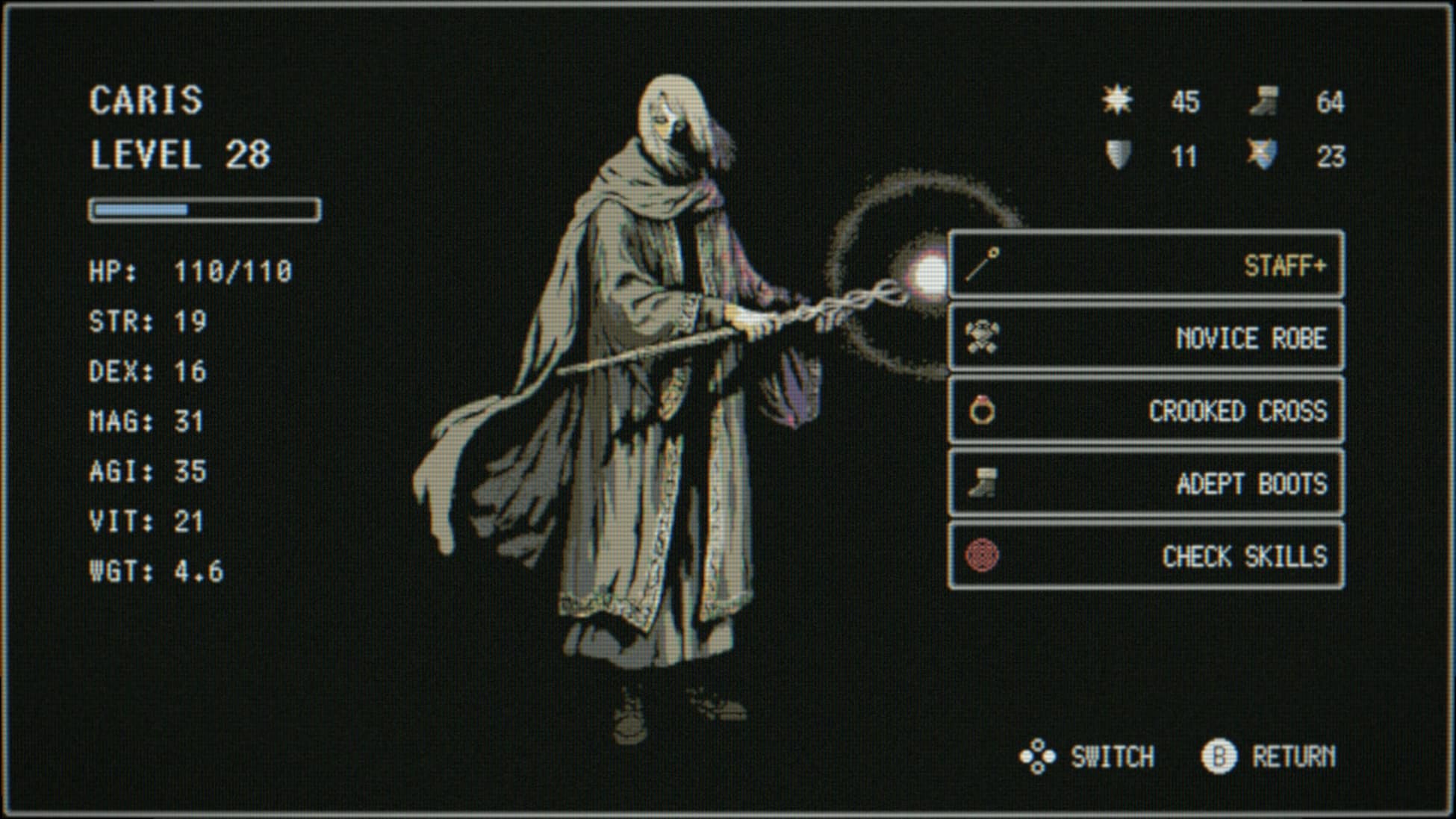Review: Mirage: Ignis Fatuus (Nintendo Switch)

Mirage: Ignis Fatuus is a puzzle game in which you move a rectangular prism through various environments to save the world. Strap yourselves in and prepare your spatial awareness for this head-scratching adventure!
The story follows a character cleverly named Kyuboy’d. There are fifty levels to work through, but the first thing that struck me was how a story was woven into the puzzles, especially early on. The first level serves as a tutorial. It’s a simple setup with Kyuboy’d at home as he heads off to work. The next level involves moving down the street, teaching you how to avoid objects, and the one after that is set in Kyoboy’d’s office. It’s a cool intro that eases you into the mechanics while engaging you with a narrative.
Once you arrive at work, you discover things are amiss. Other people (well, shapes) are disappearing due to a lack of some kind of liquid Mana. Turns out you’re a talented Mana engineer, and that makes you the right person/shape to fix the issue.
Thus begins a journey through increasingly complex environments to find the cause of the Mana shortage. Each level has a simple goal: move from one side to the other. The end point is clearly highlighted by a checkered pattern. Move into that zone and you’ll clear the area and move on to the next. The problem lies in getting there.
As a rectangular prism, your moveset is limited to tipping on your short or long side, then rolling, or tipping again. It’s a clever mechanic that’s simple to control. The complexity lies in later levels with narrow pathways which can only be traversed if you approach in a specific position. Your long side won’t fit horizontally on a bridge that’s only one square wide, for example. You’ll need to step back, rotate somehow, and try again. On the plus side, fifty levels will take some time to work through. On the other hand, if spatial awareness isn’t your thing, the gameplay starts to get really tricky.
A clever addition to this mechanic is the ability to rotate the screen. This can change the landscape by using a different perspective. For example, a gap between two platforms might not be present if viewed from another angle. It’s a little like those classic pictures of mind-bending Penrose stairs (also known as the impossible staircase) that go up and down at the same time yet somehow join. It’s a cool trick that adds depth—almost another dimension—to each puzzle.
But things do become tricky, and to this end, a hint system would be a welcome addition. A way to skip levels could also assist. As it is, there’s a chance frustration could set in if you can’t work out how to fit your shape into the right pattern. There’s no death (though falling off an edge will force you to restart a level), so you can try, try, and try again. Conversely, solving puzzles is extremely satisfying, especially after a long bout of trial and error. If you do enjoy a challenge, Mirage could scratch that itch.
There are some incentives to encourage replay. These come in the form of a timer and a move counter. Each level records your best time and fewest moves, so you can try again to beat your best score. This is a great addition, though without some kind of star system or leaderboard, there’s no way to measure whether your score is actually any good. I’d love to see a more robust system in place in an update or sequel.
I enjoyed the music, with some pleasantly upbeat tunes to accompany you on your quest. Unfortunately, these catchy tunes are short enough that the loops can become repetitive. However, things are kept slightly fresh with a new tune to get stuck in your head every few levels.
Graphically, the blocky sprites are colorful and somehow cute, with simple aesthetics that match the environment. After starting in the city, you’ll soon traverse buildings before entering grassy plains, snowy zones, and even pink, Mana-infused areas. Again, it keeps things feeling fresh as you progress. Some of the puzzle elements are clever, too. For example, you may have to move to an object, pick it up, then use it to somehow fill a gap or trip a switch to make another path appear. It keeps you on your toes in addition to the spatial component.
Overall, Mirage Ignis Fatuus is a clever little puzzle outing. The story and graphics go a long way to making this stand out. Some extra incentive to replay, however, or a hint system to help with the more frustrating situations, would be a welcome addition.






